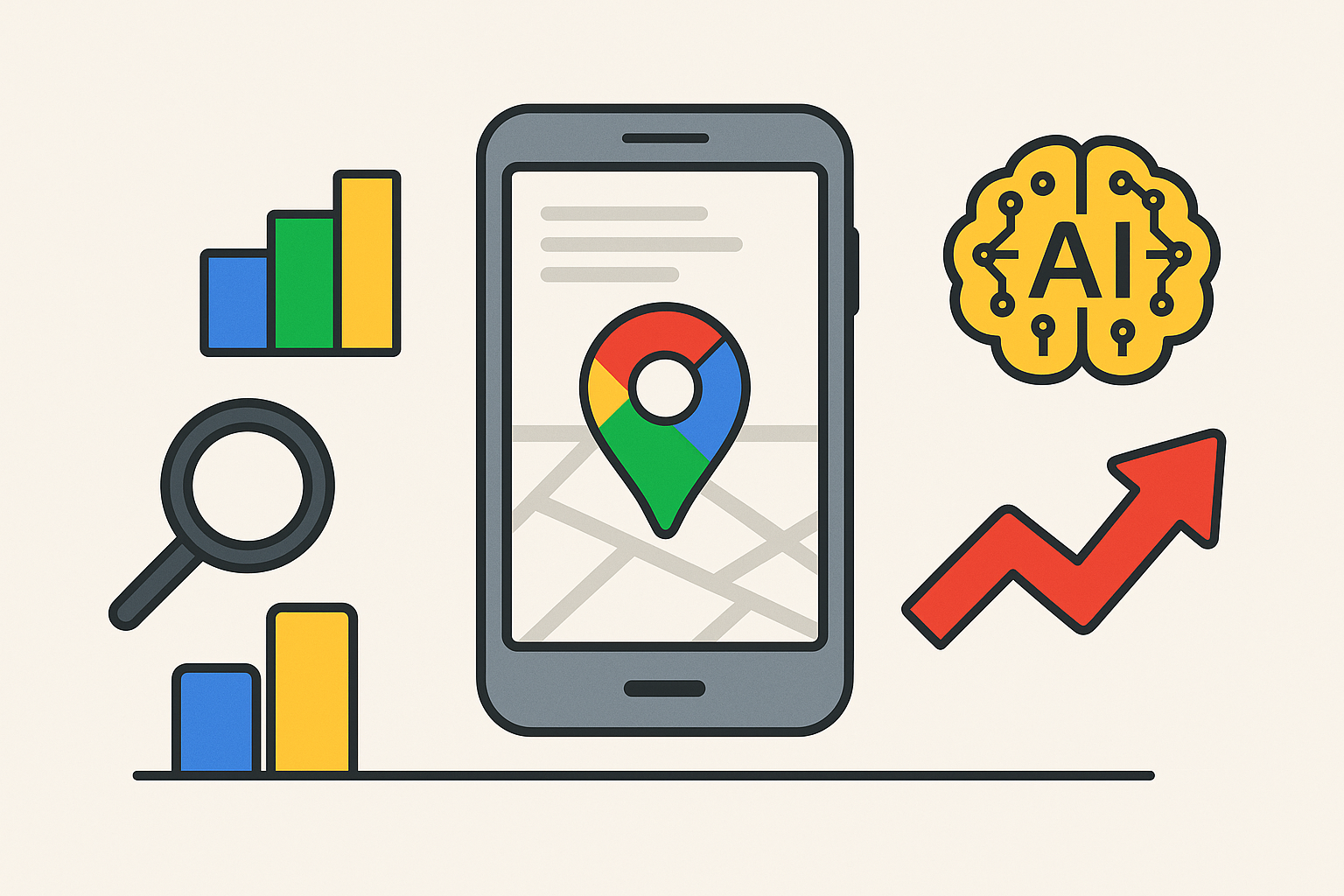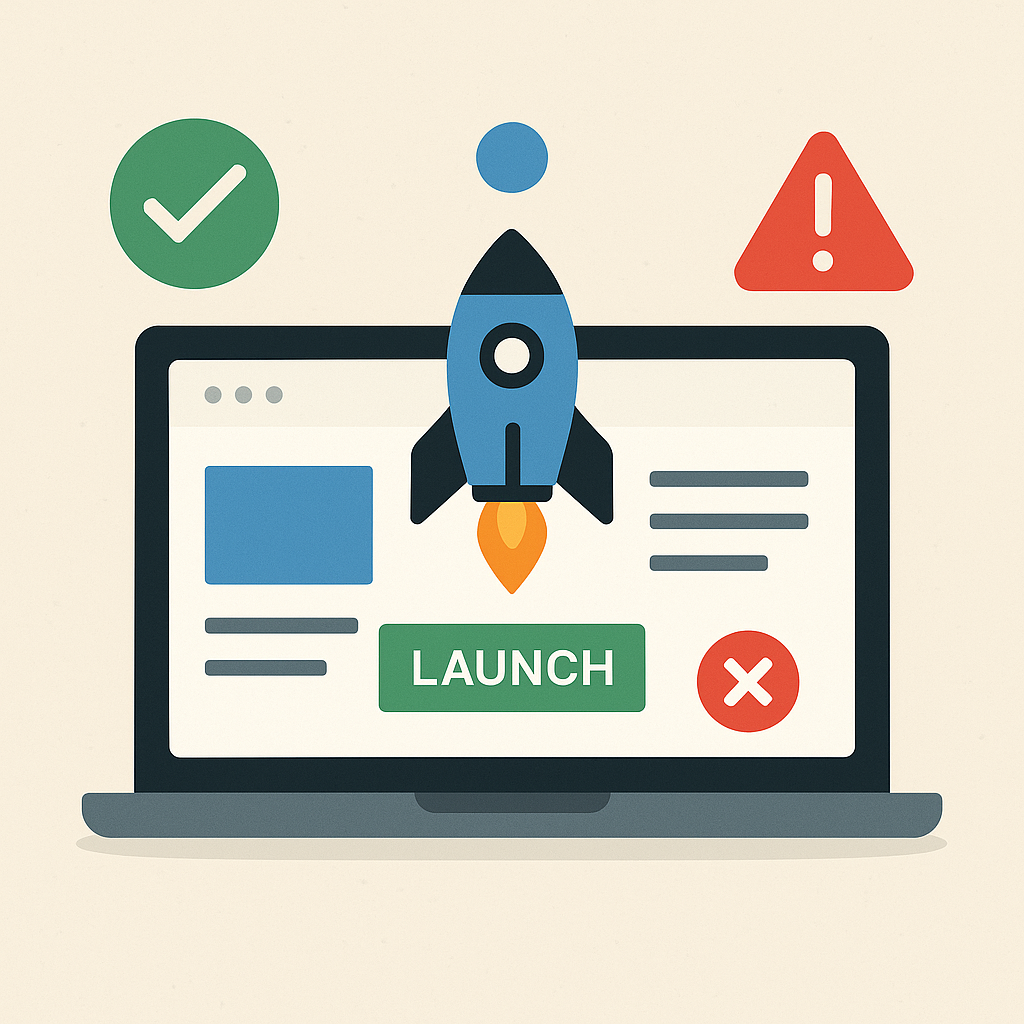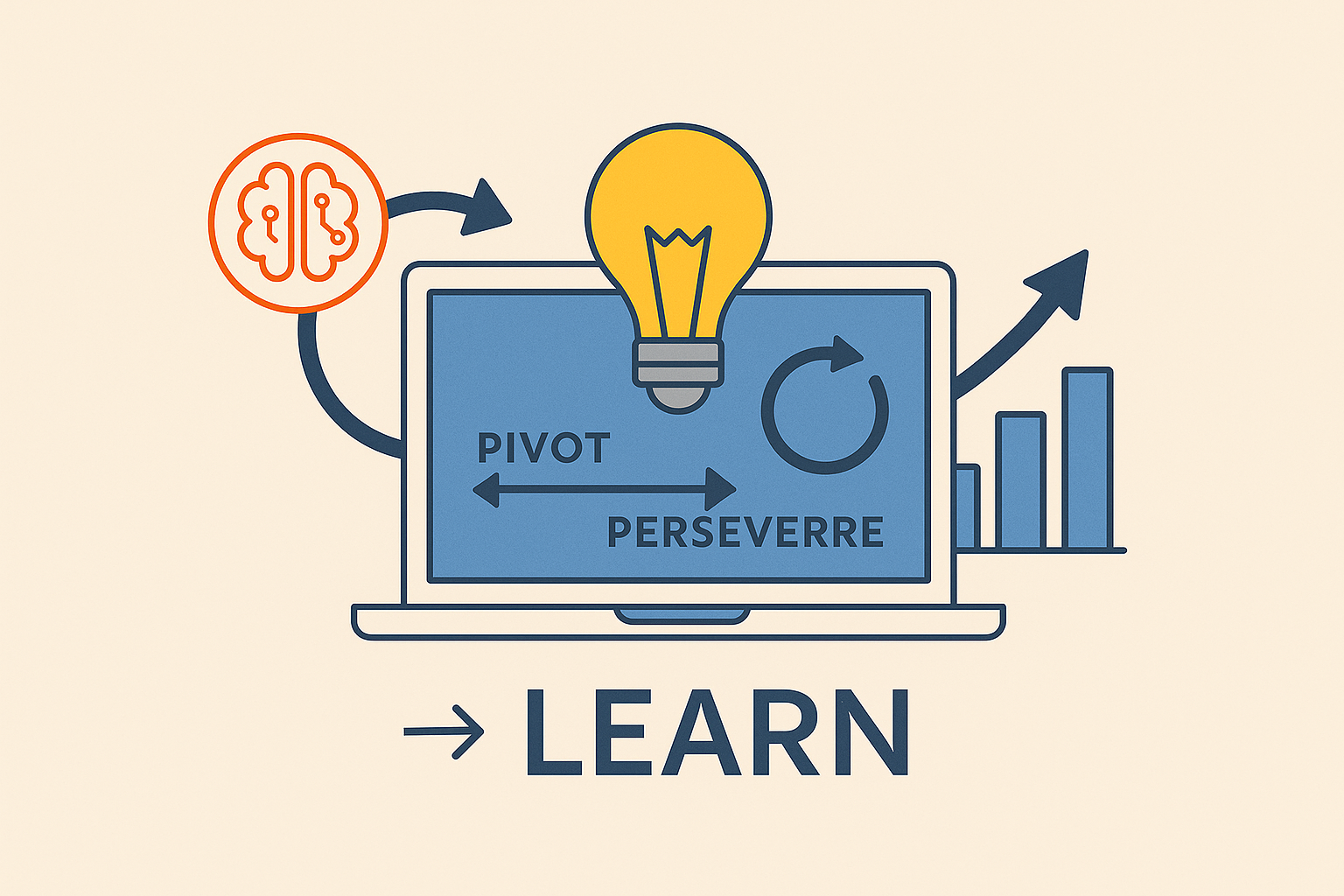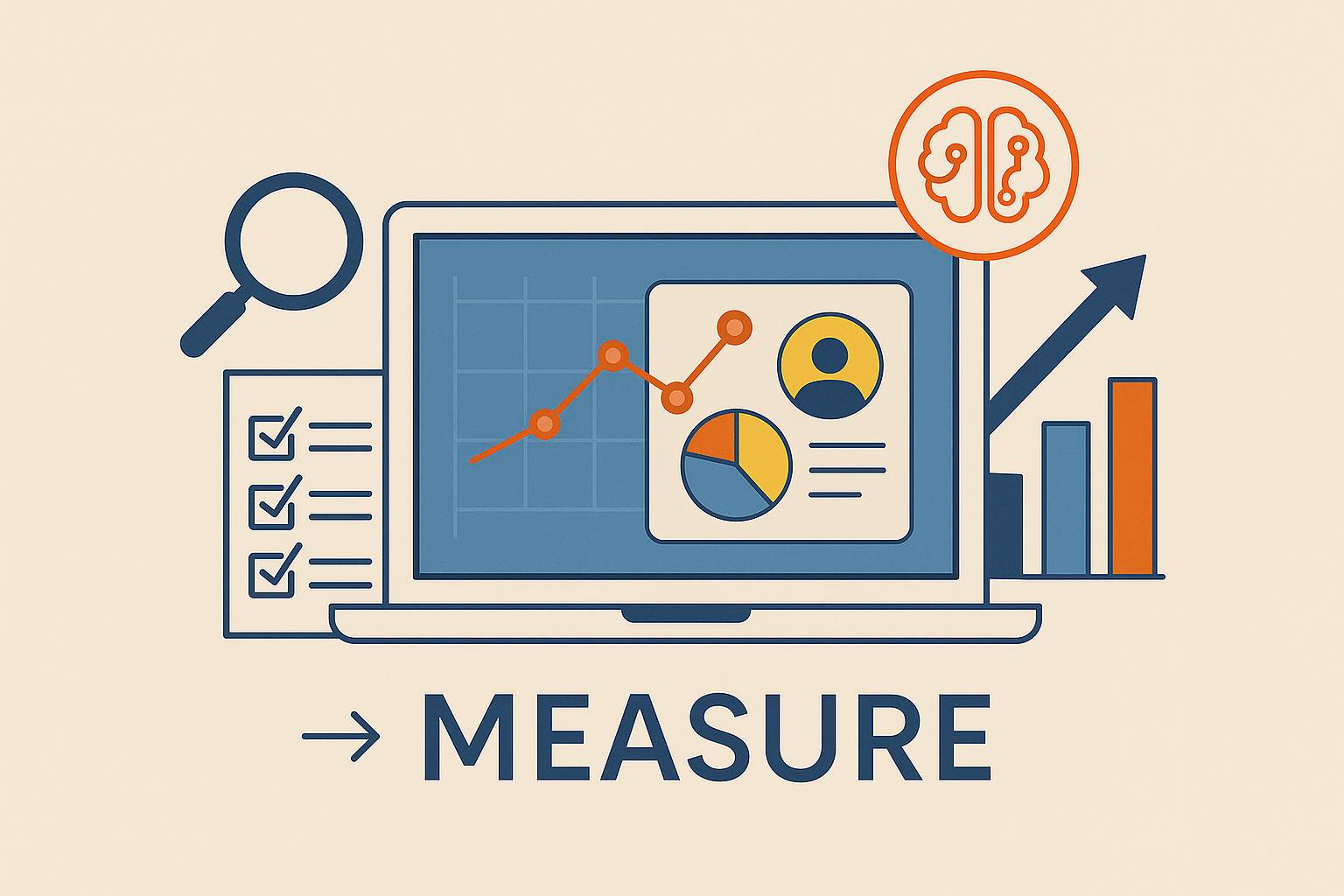Feeling lost in the digital noise? As a solopreneur or local startup, you know the challenge: grabbing attention and driving growth on a tight budget. What if a tried-and-true marketing channel, often overlooked, could become your secret weapon when combined with smart, modern strategies?
Forget what you think you know about direct mail. In an era of overflowing inboxes and fleeting online ads, a physical mailpiece can offer a tangible, trustworthy connection to your local customers. And when you fuse it with the resource-savvy Lean Startup principles, USPS Direct Mail transforms into a powerful, measurable, and surprisingly affordable engine for local growth. This guide will show you exactly how.
Foundations: Why Direct Mail & Lean Principles Are Your Secret Weapon
Think direct mail is old news? Think again. A physical mailpiece demands interaction, stays in homes longer, and can cut through digital clutter like nothing else. For local businesses, it signals legitimacy and a commitment to the community. But how do you tap into this without gambling your precious marketing budget?
Enter the Lean Startup methodology. Pioneered by Eric Ries, its core ideas are perfect for making direct mail work smarter, not harder:
Minimum Viable Campaign (MVC): Instead of a massive, risky mail blast, start small. An MVC is your smallest, most targeted direct mail test to see what works. Think one or two postal routes, not the whole town.
Build-Measure-Learn Feedback Loop: This is your engine for continuous improvement. Build your small campaign. Measure its performance meticulously. Learn from the data to make your next campaign even better.
Validated Learning: Ditch assumptions! Use real data from your MVCs to prove what resonates with your audience. Each campaign is an experiment.
Combining Lean with direct mail means you stop guessing and start learning. You test offers, targeting, and messaging iteratively, refining your approach with each small campaign. It’s about minimizing risk, maximizing your budget, and making direct mail an agile, data-driven tool for growth.
Navigating Your USPS Direct Mail Options on a Lean Budget The USPS offers several direct mail services, but for local saturation on a budget, Every Door Direct Mail (EDDM) Retail is often the star.
Deep Dive: USPS Every Door Direct Mail (EDDM) Retail
EDDM Retail lets you reach every mailbox on specific USPS carrier routes without needing names or addresses. It's fantastic for geographically focused businesses like restaurants, local services, or retail stores. Here’s the gist:
Route Selection: Use the free USPS EDDM Online Tool. You can see routes on a map, view demographic data (average age, income, household size), and pick your targets.
Mail Piece Specs: Your mailers (usually "USPS Marketing Mail Flats" like postcards or larger pieces) must meet strict USPS size, weight, and thickness rules. Compliance is key!
Saturation: You mail to every active mailbox on your chosen route(s). You can include or exclude businesses.
Bundling & Paperwork: Mailpieces are bundled (usually 50-100 pieces), with a "Facing Slip" on each bundle. You'll also complete an EDDM Retail Processing Form (PS Form 3587).
Drop-Off: Take your bundled mail, paperwork, and payment to the local Post Office serving those routes.
Estimated EDDM Retail Costs (Illustrative - Always Verify Current Rates!)
EDDM's postage is attractive (around $0.20-$0.22 per piece for flats as of early 2024/May 2025 projections, but always verify with USPS). However, factor in printing and design:
Export to Sheets
Disclaimer: These are illustrative estimates and subject to significant variation. Always obtain current quotes and USPS rates.
Common EDDM Beginner Challenges: Watch out for design/compliance errors (get those specs right!), bundling/paperwork mistakes, poor route targeting, and failing to set up tracking. A pre-print compliance checklist is your best friend here!
Other USPS Options to Know:
USPS Share Mail: Lets your existing customers mail promotional pieces (that you design and pay postage for when mailed) to their friends. Great for referral marketing but more complex to set up.
USPS Informed Delivery (Paid Campaigns): Allows you to send a full-color, clickable digital ad alongside the grayscale scan of your mailpiece in recipients' daily Informed Delivery emails. This bridges physical and digital, offering great tracking.
Export to Sheets
Planning Your Minimum Viable Campaign (MVC) for Maximum Learning
Ready to launch? Not so fast! Smart lean marketers plan a Minimum Viable Campaign (MVC) – your smallest experiment to test assumptions before scaling.
Define Clear, Measurable Objectives: Go beyond "increase sales." Use SMART goals (Specific, Measurable, Achievable, Relevant, Time-bound). Example: "Generate 20 coupon redemptions from Route X within 14 days." Remember, an MVC is also about validated learning: will homeowners on this route respond?
Leverage EDDM Demographics for Targeting: Use the USPS EDDM Online Tool's demographic filters (age, income, household size) to pick routes matching your ideal customer. Start with 1-2 smaller routes for your MVC.
Craft Compelling, Low-Risk Offers: Your offer drives action. Make it clear, valuable, easy to redeem, and low-risk for your business initially. Think percentage discounts, free consultations, or BOGO deals. Link it to a clear Call to Action (CTA)!
Budget for Your MVC: Calculate postage, printing, design, and tracking tool costs. Use a simple budget template to stay on track. (A sample budget template is a great downloadable for your readers!)
Establish Tracking Mechanisms: This is non-negotiable for Lean! Use unique coupon codes, dedicated landing page URLs (yourwebsite.com/mailerdeal), QR codes, or call tracking numbers to attribute responses directly to your mailer.
Pre-Campaign Validation: Before printing, get feedback on your offer and design from a few unbiased people. Catch flaws early when they're cheap to fix!
Designing Compliant, High-Impact Mailers That Won't Break the Bank
Your mailer has seconds to make an impact. It also must meet strict USPS EDDM Retail rules.
Key Design Principles for Scannability & Action:
Visual Hierarchy: Guide the eye to the headline, then visual/offer, then CTA.
Clear Call to Action (CTA): Use strong action verbs. Make it prominent.
Compelling Headline: Grab attention instantly with a benefit or solution.
Relevant Imagery: Use high-quality, authentic visuals.
Readability: Clean fonts, good contrast, concise copy.
Branding: Keep it consistent with your business identity.
Budget-Friendly Design Tools: Platforms like Canva, Adobe Express, or VistaCreate offer user-friendly interfaces and templates. Crucial: Customize templates heavily and always ensure your final design is USPS compliant regarding size, weight, indicia placement, etc. These tools don't guarantee compliance – that's on you!
Ensuring USPS Compliance: For EDDM Retail Flats:
Size & Dimensions: Must be rectangular and meet specific height, length, and thickness rules.
Weight: Max 3.3 ounces for standard EDDM Retail.
Indicia: The postage permit box must be correctly formatted and placed.
Addressing: Use the generic "Postal Customer" format.
Paper Stock: Must meet minimum thickness/stiffness. (A detailed USPS Mailer Design & Compliance Checklist is an invaluable resource for your audience here!)
Production Power: Printing and Preparing Your Mailers Like a Pro
Design complete? Time for printing and prep!
Printing Options:
Online Printers (VistaPrint, GotPrint, etc.): Often cheapest, convenient, wide options. You manage compliance.
Local Print Shops: Personalized service, physical proofs, faster turnaround (no shipping). May offer bundling. Often pricier.
USPS EDDM Partners: EDDM experts, often offer integrated services. Can be more expensive.
Step-by-Step Mail Preparation for EDDM Retail:
Bundling: Group mailers (50-100 pieces per bundle, by route), all facing the same way. Secure with rubber bands.
Facing Slips: Attach a correctly filled USPS Facing Slip to the top of each bundle (route number, piece count, ZIP, date).
Paperwork: Complete the EDDM Retail Processing Form (PS Form 3587) summarizing your mailing.
The USPS Drop-Off: Take your bundled mail, paperwork, and payment to the designated Post Office for your chosen routes. Be prepared for the clerk to verify everything.
Execution & Tracking: The Build-Measure-Learn Loop in Action
Mailers dropped? Now the real learning begins!
Monitor Responses: As mailers land (1-3 days), check your tracking: website analytics for landing page visits, call tracking dashboards, coupon redemptions, QR scans.
Calculate Key Metrics: After the response window (often 1-2 weeks), calculate:
Response Rate: (Total Responses / Total Pieces Mailed) * 100%
Conversion Rate: (Sales / Total Responses) * 100%
Cost Per Response (CPR): Total Cost / Total Responses
Cost Per Acquisition (CPA): Total Cost / Sales
Return on Investment (ROI): (((Revenue - Cost) / Cost) * 100% (An ROI Tracker Spreadsheet will make this easy for your readers!)
Analyze the Data: Go beyond numbers. Why did you get these results? Did you meet SMART objectives? Which tracking worked best? Did some routes outperform others? Was the offer compelling? Is the CPA sustainable?
Apply Build-Measure-Learn: Pivot or Persevere?
Persevere: Positive results? Scale cautiously (more similar routes, same campaign).
Iterate/Adjust: Mixed results? Change one variable based on learnings (offer, headline, targeting) and test again.
Pivot: Poor results? Time for a bigger change (drastic offer change, different channel, new target audience definition).
This cycle of testing, measuring, learning, and adapting is how you make direct mail a lean, mean, marketing machine.
Amplify Your Reach: Low-Budget Multi-Channel Magic
Direct mail shines even brighter when part of a coordinated multi-channel strategy.
Coordinate with Digital: Your mailer's URL should lead to a consistent, mobile-friendly landing page. Update your Google Business Profile with the offer. Email your list around the mail drop time. Consistency is key!
Leverage Hyperlocal Social Media: Post offers on Nextdoor (follow rules!) or local Facebook groups. Run low-budget Facebook ads targeting the same ZIP codes as your EDDM.
Build Community Outreach: Participate in local events. Partner with non-competing local businesses for cross-promotion. Small sponsorships build goodwill.
Strategic Timing & Branding: Coordinate timing of all efforts. Maintain absolute visual and messaging consistency across every channel.
Practical AI Applications: Use AI language models (ChatGPT, etc.) to brainstorm headlines, draft copy, or refine CTAs. Use AI design tools for inspiration. Always review and refine AI output!
USPS Informed Delivery Interactive Campaigns: As mentioned, set up a paid campaign to show a clickable, color ad alongside your mailer's scan in recipients' daily emails. It’s a great digital touchpoint with measurable engagement.
Your Toolkit for Success
To truly master Lean Direct Mail, practical tools are your allies. Throughout this guide, we’ve highlighted the importance of:
A USPS Mailer Design & Compliance Checklist: Your safeguard against costly mistakes.
A Sample MVC Budget Template: For clear financial planning.
An ROI Tracker Spreadsheet: To effortlessly calculate key metrics and analyze performance.
These resources transform theory into actionable steps, empowering you to manage your campaigns effectively. (Consider offering these as free downloads to build your email list!)
Conclusion: Make Lean Direct Mail Your Local Growth Engine
Successfully using USPS Direct Mail, especially EDDM Retail, within a Lean Startup framework isn't a far-fetched dream for solopreneurs and local startups – it's a powerful, cost-effective reality. By embracing iterative campaigns, starting with a Minimum Viable Campaign, focusing on data-driven decisions, ensuring meticulous compliance, and robustly tracking your results, you can turn direct mail into an agile and profitable marketing channel.
When you amplify your efforts by strategically integrating direct mail with low-budget digital tools, AI assistants, and community engagement, you create a marketing synergy that delivers real results. So, take these principles, plan your first MVC, and start learning your way to local market success!





